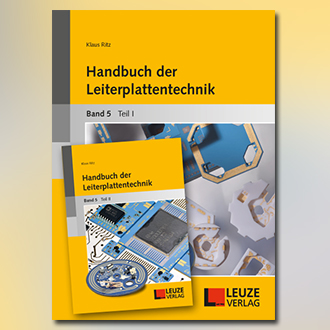Printed Circuit Board Technology Manual – IZM researchers involved with exciting contributions
Leuze Verlag has recently published volume 5 of the Printed Circuit Board Technology Manual. Among the authors are three renowned IZM researchers, including the Deputy Institute Director Martin Schneider-Ramelow.
16 years have passed since volume 4 of the Printed Circuit Board Technology Manual was published in 2003. There have been a lot of changes in the printed circuit board scene during that time. The two-volume manual takes these developments into account.
The European printed circuit board market has undergone major changes since the turn of the millennium; in particular, it has shrunk from around 550 printed circuit board manufacturers to 200 suppliers now. This trend can also be observed in Germany, where the remaining 30 companies in this sector can successfully hold their own in the market, albeit due to supply bottlenecks by Asian producers. New technological developments, such as digitalization, industrial automation, electric mobility, 5G, and autonomous driving, are to be met by printed circuit board manufacturers by means of high expenditure on technologies and mergers and acquisitions.
The fifth volume of the Printed Circuit Board Technology Manual deals with all these developments and focuses on cutting-edge topics such as insulated metal substrates, printed electronics, mechanical processing, and components embedded in printed circuit boards.
The volume, edited by Klaus Ritz, also includes two contributions by scientists from Fraunhofer IZM. Prof. Martin Schneider-Ramelow, a globally acknowledged expert for wire bond connections, and his colleague Ralf Schmidt dedicate their article "Wire Bondable Circuit Board Surfaces" to a topic that has not lost any of its relevance in recent years. Dr. Henning Schröder, a specialist in optical interconnection technologies, contributed an article on three-dimensional electro-optical circuit boards (EOCBs) used for optical data transmission.
The book is a must for specialists and decision-makers in the field of printed circuit board technology and provides interested parties with an excellent overview of the state of the art and the opportunities and risks that exist.
Last modified:
 Fraunhofer Institute for Reliability and Microintegration IZM
Fraunhofer Institute for Reliability and Microintegration IZM